SparkFun began in 2003 when the student Nate Siedle burned a power supply in his dorm and instead of fixing it he decided to open his own company.
Since then, from its headquarters in Boulder, Colorado he has started to create products for the purpose of making the world of electronics more accessible. Nowadays, there are more than 2,000 components and widgets, and, in addition, they provide literature, training and online tutorials which can be accessed at: https://www.sparkfun.com/
The idea is simple: to provide components and support for you to create something. Sharing is the basic commandment of the company. Contrary to the larger companies that think more about Intellectual Property, the founder of Sparkfun thinks that the solution which allows us to reach innovation is the open source and this is valid for both hardware and software.

Products
In the wide line of more than 2,000 products, ranging from books, audio products, IoT, Arduino, etc., we highlight the shields and breakout boards which can be purchased from Mouser.
Thus, to exemplify we chose two families of products, ideal for the development of your wearable that is being launched at this moment.
1. Breakout Boards SparkFun
Our first remark is the line of Breakboards with several options which allow the control of motors, LEDs, microcontrollers and more in a prototype. This line has the following products:
(Go to http://www.mouser.com/new/sparkfun/sparkfun-breakout-boards/ to get to know and buy these boards)
SparkFun BOB-13884 LED Driver Breaout - LP55231
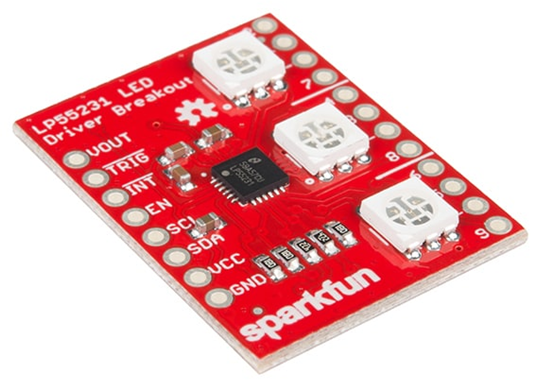
This board is a complete solution for the development of a nine-channel LED controller using I2C interface. The board is equipped with a LP56231 LED controller chip plus 3 RGB LEDs. It also has jumpers which allow us to replace the LEDs of the board with external LEDs and the I2C configuration. This feature allows a daisy setting of up to 4 LP55231.
The board is driven by PWM LEDs making it ideal for producing color mixing effects. The board was originally designed for automotive and mobile applications. Watch the movie on the link.
SparkFun ROB-13911 Serial Controlled Motor Driver
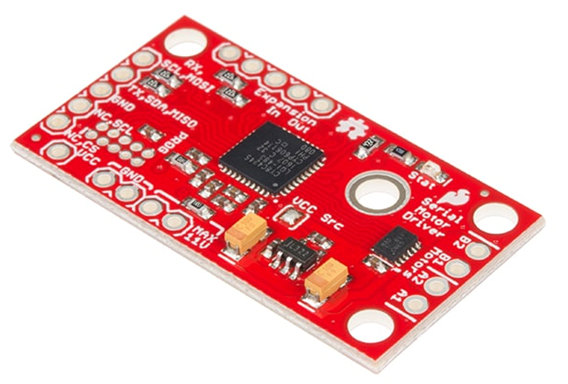
This board, as the name implies, consists of a motor driver controlled by the serial port (SCMD). The board can control motors up to 1.2 A per motor commanded by UART, I2C or SPI communication, with a voltage of 11 V.
The logic is 3.3 V but can be modified to operate with 5 V with a logic converter. See at the link an application video.
SparkFun SEM-14045 Particle Sensor Breakout - MAX30105
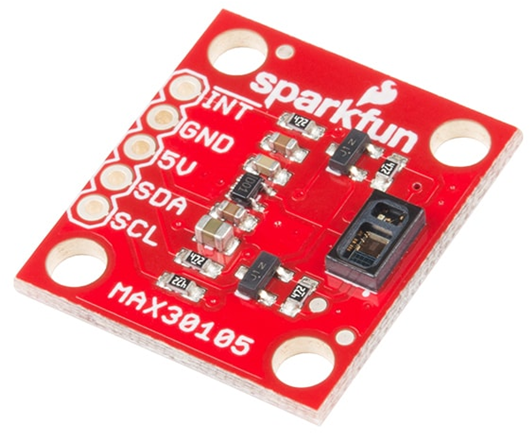
This interesting Breakout Board consists of a powerful sensor which can detect distances, heart beats, particle detection and even the blink of an eye, based on Maxim's MAX30105 sensor.
The board is equipped with 3 LEDs and a sensitive photoelectric detector. The idea is to pulse different LEDs and then detect what is reflected.
Based on the reflected signal it is possible to detect different types of particles or materials (like oxygenated blood or smoke from a fire).
The board uses red, green and infrared LEDs, allowing a multitude of uses, including oximetry.
Operating with 5 V power supply it can interface with 3.3 or 5 V logic, with an Arduino application on the company's website (see link).
2. SparkFun LilyPad
This is a wearable technology developed by SparkFun with several products with different input, output and power features. We give some examples.
LilyPad Arduino USB Atmega32U4 Card
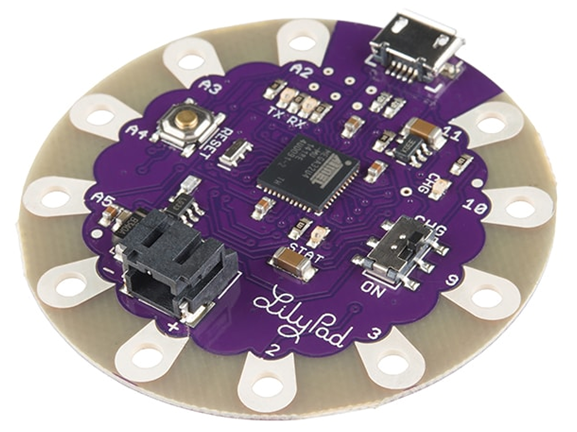
This board replaces the classic ATMega328 with the new ATMega32U4. A micro USB cable is used to charge the program and the power is 3.3 V. A JST connector allows the connection of a Li-Po battery for power.
LilyPad Arduino 328 Motherboard
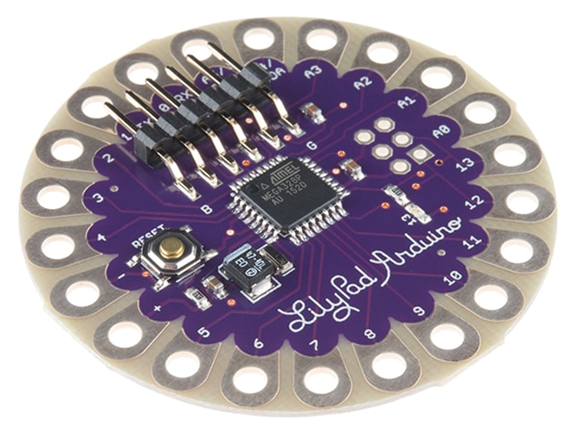
This board is an Arduino controller specially designed to be integrated into textiles and other wearable designs. Light, round, it has features which facilitate its implementation in designs.
Arduino LilyPad Simple Board
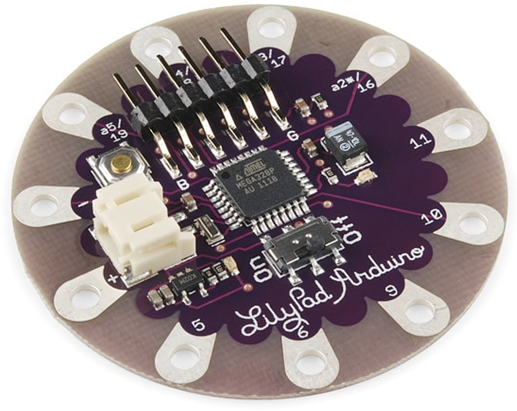
This other SparkFun board contains an ATMega328 with the Arduino charger, having fewer pins than the previous one, and a power socket, power switch on/off.
With the use of a socket for the battery, it can be sewn directly into a wearable without the need to do the same with the power supply. The load circuit is based on MCP73831.
More SparkFun products can be accessed at Mouser's link at: http://www.mouser.com/new/sparkfun/sparkfun-lilypad/